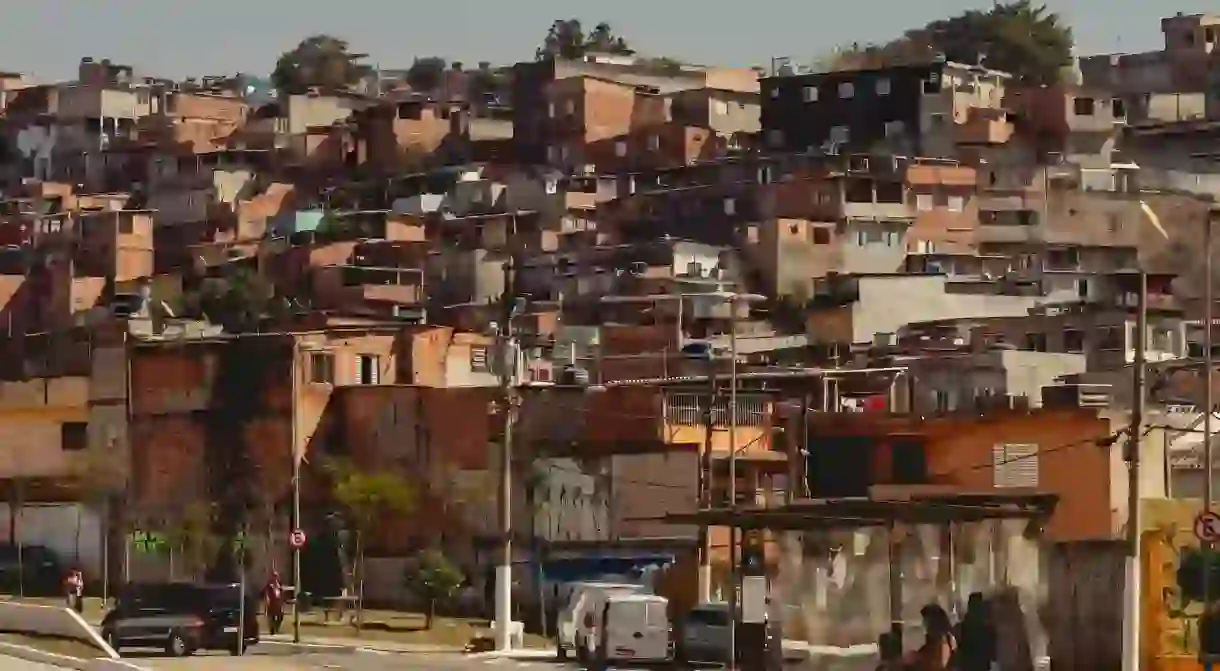A Guide To Rio De Janeiro's Favelas

In Rio de Janeiro, it is common to see numerous favelas, each with an architectural signature of box-shaped, flat-roofed makeshift homes, stacked upon each other on the hillside. In poorer areas, especially in the north of Rio and indeed the north of the country, the housing tends to be more frayed at the seams. We scratch the surface of favelas and discover some of Rio’s safest and most dangerous favelas.
If you want to put your new knowledge of Rio and its Favelas to use, check out the best tours of Rio de Janeiro and make the most out of your trip.
History of Favelas
Favelas (‘slum’ or ‘shantytown’ in English) first appeared in the late 19th Century, built by displaced soldiers and later occupied by homeless former slaves. Favela growth reached a peak in the 1970s when many people moved from the countryside to the cities to take advantage of the economic growth of the country. Many, having no place to live and little money, moved into favelas. The word ‘favela’ comes from the name of a tree in Bahia that is known to irritate the skin after touching it. The soldiers that originally built the favelas came from Bahia and named the first favela after this tree, unknowingly creating the name that people would use for years to come.
Favelas Nowadays
In 2010, 11.4 million of the 190 million people living in Brazil lived in favelas, highlighting the enormous divergence between rich and poor. There was and continues to be a movement to refer to favelas as ‘communities’. Whilst this is gaining commonality and is polite to say this in conversation with residents from there, they are still referred to as favelas for easy identification. In Rio de Janeiro, there are approximately 600 favelas, the largest and one of the safest favelas is Rocinha (ironically meaning ‘little farm’) located in the south zone of Rio and supports a population of 70,000 people. Rocinha is the number one favela for the increasingly popular tourist tours that take tourists around the favelas in a jeep to see favela-life, seeing how people live and interacting with locals. This has been met with mixed opinions. Some claim it adds to a positive impression of favelas and brings money to the area, others argue the ethics of it.
A favela tends to be ruled by drug traffickers or organized crime groups (militias) that set the rules and run the joint. The residents are protected by the drug lords in terms of local robberies, yet violence between rival gangs is high. Drug lords in favelas are often incredibly rich, yet remain in their favela, since leaving is too risky for attracting police attention. Many favelas in Rio, however, are occupied by UPPs, Pacifying Police Units.
There are many Favela tours offered across Rio, book ahead for the best tours in the area.

UPPs
UPPs manage favelas through their law enforcement and social services program with the aim of reclaiming land controlled by drug traffickers and crime groups. All the favelas in the south of Rio are controlled by UPPs which brings relative peace to the area. Some of the key favelas with significant violence in the north are also controlled by UPPs, however, many are not, as drug-dealing, gun fights, and drug lord control continues in force. These remain out of tourist areas so don’t pose any risk to tourists in Rio. The arrival of the UPPs was not met with open arms. In November 2010 a security crisis was recognized in Rio, with criminal gangs attacking the UPP efforts. With a counter-attack from the BOPE (elite police force), the army and the police, eventually, the UPP gained control. Drug lords were either killed during the struggle or arrested and their house, many with jacuzzis and luxury items, were confiscated.
Rio de Janeiro’s safest favelas
The safest favelas are located in the south of the city. Whilst the odd blip happens, it is no different to regular, unexpected street crime. The key ones in the south are Pavão-Pavãozinho, located between Copacabana and Ipanema; Cantagalo in Copacabana; Santa Marta in Botafogo; and Vidigal and Rocinha just past Leblon. Vidigal is another favela famous for its parties that attract tourists every weekend to its hilltop bar, Alto Vidigal, with house, samba, and reggae nights. These parties are very different to the infamous, baile funk parties that are more common in the north zone favelas and, depending on the location, are not advisable for tourists due to potential dangers.
Rio’s most dangerous favelas
People will be excused for thinking that City of God is the most dangerous favela if they based their opinion on the famous and popular film of the same name. Whilst that may have had some truth in the past, nowadays it is much calmer there. Vila Cruzeiro and Complexo do Alemão were the two favelas that reacted strongly against the UPPs, resulting in a high number of shoot-outs and excessive murder rates. They have police units nowadays, yet problems still occur in these large favelas in the north of Rio. Vila Aliança is a favela that currently struggles with violence, with criminal gangs in possession of large guns and other weapons such as grenades, where gang members can be as young as teenagers. There is no police enforcement there as of yet.













